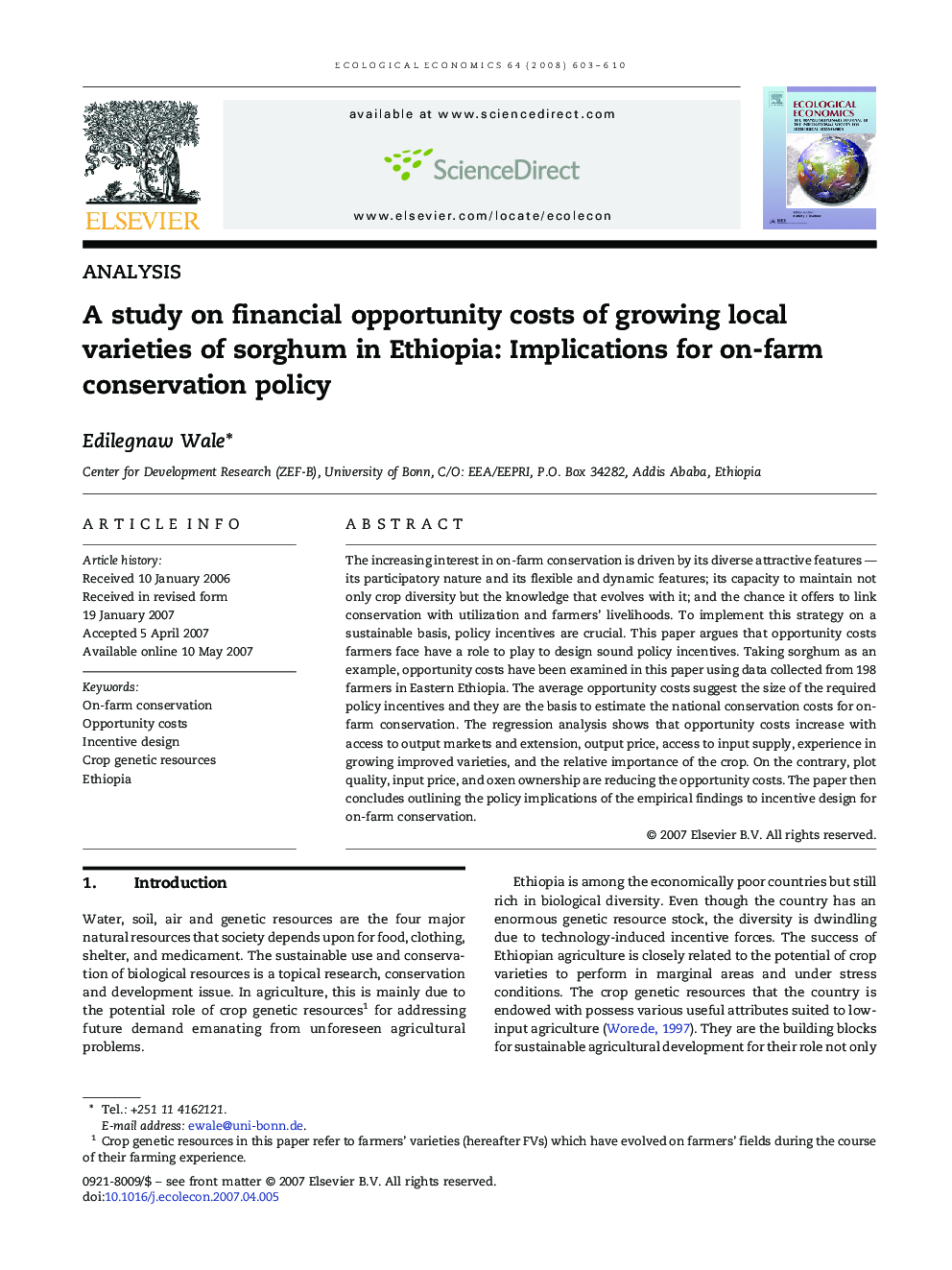| Article ID | Journal | Published Year | Pages | File Type |
|---|---|---|---|---|
| 5052091 | Ecological Economics | 2008 | 8 Pages |
The increasing interest in on-farm conservation is driven by its diverse attractive features - its participatory nature and its flexible and dynamic features; its capacity to maintain not only crop diversity but the knowledge that evolves with it; and the chance it offers to link conservation with utilization and farmers' livelihoods. To implement this strategy on a sustainable basis, policy incentives are crucial. This paper argues that opportunity costs farmers face have a role to play to design sound policy incentives. Taking sorghum as an example, opportunity costs have been examined in this paper using data collected from 198 farmers in Eastern Ethiopia. The average opportunity costs suggest the size of the required policy incentives and they are the basis to estimate the national conservation costs for on-farm conservation. The regression analysis shows that opportunity costs increase with access to output markets and extension, output price, access to input supply, experience in growing improved varieties, and the relative importance of the crop. On the contrary, plot quality, input price, and oxen ownership are reducing the opportunity costs. The paper then concludes outlining the policy implications of the empirical findings to incentive design for on-farm conservation.
